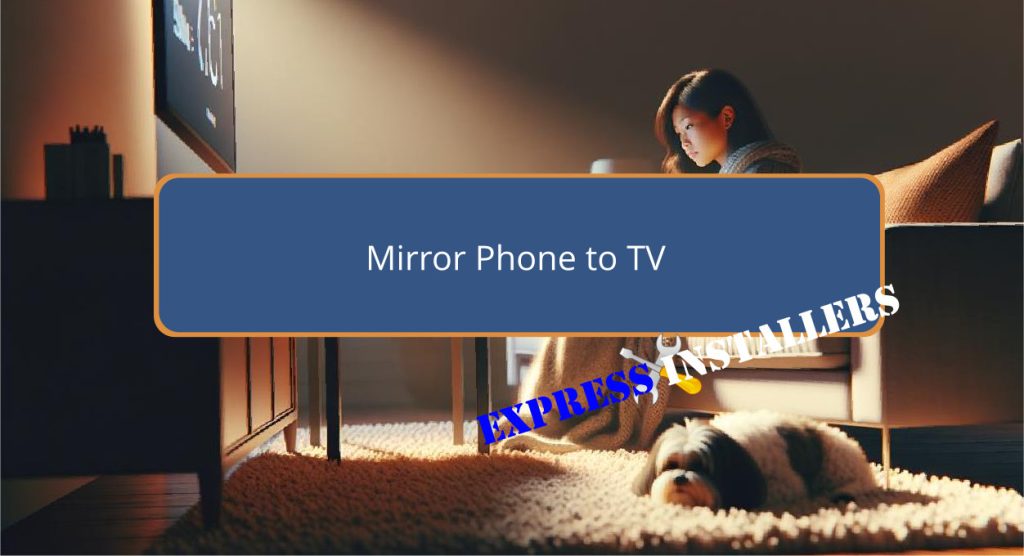
Screen mirroring projects your smartphone’s display onto a larger TV screen by using wireless technology like Miracast or through devices such as Chromecast and Roku.
To guarantee successful mirroring, both your phone and TV must be connected to the same Wi-Fi network.
It is crucial for devices to support compatible mirroring technologies; otherwise, adapters or specific settings might be required.
This functionality is beneficial for viewing photos, videos, and professional presentations in a larger format, especially on devices using Android 5 or higher.
Enhanced experience can be achieved by exploring various methods and tools that support screen projection.
Quick Summary
- Ensure both your phone and TV are connected to the same Wi-Fi network for effective mirroring.
- Use native Android features like Smart View or Miracast for direct screen mirroring.
- Consider using Chromecast or Roku devices to mirror your phone’s screen on non-compatible TVs.
- Download mirroring apps from the Google Play Store for additional features like multiple device support.
- Keep both devices’ software updated to enhance compatibility and improve the mirroring experience.
Understanding Screen Mirroring
Screen mirroring is a technology that enables you to project the content of your smartphone’s screen onto a larger TV or monitor without the need for physical cables.
This wireless setup typically requires that both the smartphone and the display device be connected to the same Wi-Fi network, enhancing user convenience and flexibility.
However, compatibility issues may arise with differing device brands or operating systems, necessitating specific adapters or streaming devices like Chromecast or AirPlay.
The benefits of mirroring include the ability to share media or presentations on a larger screen, making it ideal for both professional and recreational uses.
Nevertheless, screen resolution considerations are vital, as mismatches between the device outputs and TV inputs can affect the display quality.
Native Android Mirroring Options
Native Android Mirroring Options offer users the ability to project their device’s screen onto a larger display using the Miracast protocol, available on Android versions 5 and higher.
To initiate, access the Quick Settings menu and select the Smart View feature, which supports seamless wireless mirroring.
For those using Samsung devices, compatibility guarantees peak performance, enabling smoother screen sharing and a more cohesive interaction between your phone and the TV.
Always make sure that both devices are from the same brand to maintain this efficiency.
When engaging in native mirroring, set your phone to landscape orientation to achieve a full-screen viewing experience, enhancing the visual aspect of your content on the larger display.
Using Mirroring Apps
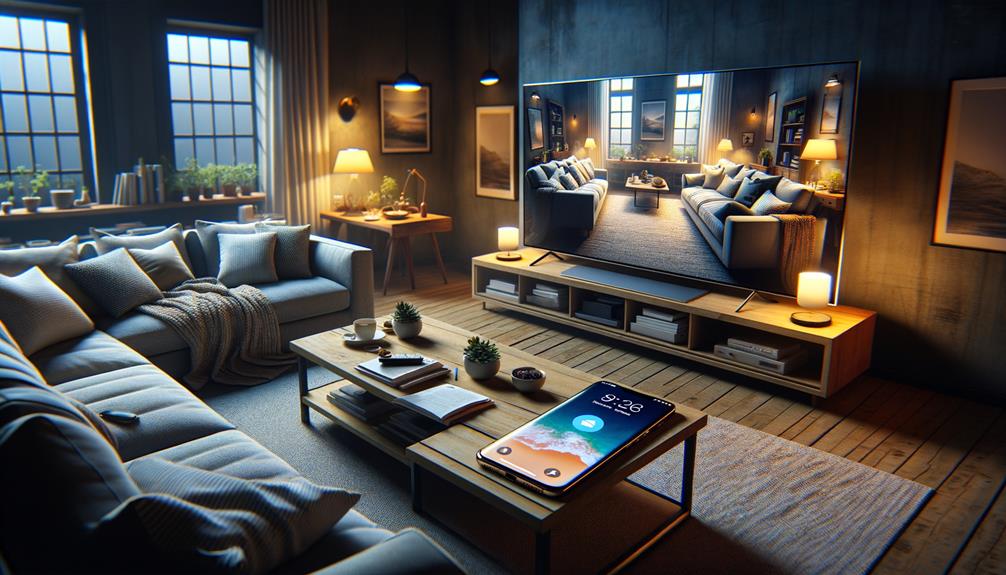
Various mirroring applications available on the Google Play Store allow Android users to seamlessly project their phone’s content onto TV screens or external streaming devices.
These apps support wireless mirroring options, enabling users to display games, photos, or videos without the need for physical cables.
Users must navigate through specific screen mirroring settings to guarantee compatibility with technologies like Miracast or Roku.
However, there are inherent screen mirroring limitations. The resolution and latency can vary depending on the network’s quality and the app’s capability.
Additionally, while some apps offer the functionality to mirror multiple devices simultaneously, this can further complicate connection stability and image quality, requiring a robust home network to manage the increased data throughput effectively.
Casting With Chromecast
Chromecast enables users to wirelessly project content from their Android phones directly to their TV screens.
This device harnesses advanced screen casting techniques to facilitate a seamless connection between mobile devices and televisions.
By tapping the Cast icon in supported applications, users can easily mirror their phone’s display onto a larger screen, utilising Chromecast‘s robust wireless display options.
Priced from £34.99, Chromecast remains an affordable choice for consumers seeking straightforward setup and versatile functionality.
It supports a wide array of apps and content types, ensuring compatibility and enhancing viewer experience.
To cease mirroring, users simply disconnect by selecting the Cast icon again, either in the app or through their phone’s Quick Settings.
Mirroring to Roku Devices
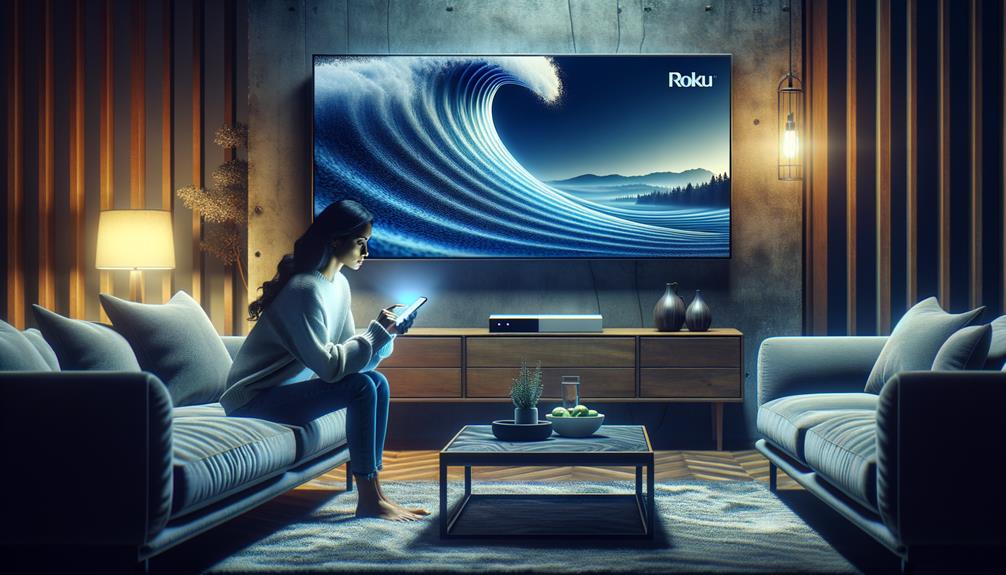
To mirror your Android phone’s screen to your TV using a Roku device, first make sure that both devices are connected to the same Wi-Fi network.
Then, enable the Screen Mirroring feature in your Roku settings.
This setup allows for wireless streaming advantages, offering flexibility without the clutter of cables.
Install a compatible streaming app on both your phone and Roku to facilitate a smooth mirroring experience.
Effective Roku mirroring tips include keeping your software updated and ensuring a strong Wi-Fi connection.
Screen casting benefits extend to displaying photos, videos, and apps on a larger TV screen, enhancing viewer experience with more robust TV display options.
Enjoy the content seamlessly in a more engaging format.
Connecting via Amazon Fire TV
Utilising an Amazon Fire TV Stick, users can effortlessly mirror their Android phone’s screen to a television by connecting the device to the TV’s HDMI port.
To enable mirroring, both the phone and the Fire TV Stick must be connected to the same Wi-Fi network.
Navigate to the settings on the Fire TV Stick, select the Screen Mirroring option, and follow the prompts to start mirroring.
This feature enhances the user experience by offering the benefits of wireless streaming, such as reduced cable clutter and the flexibility to control the display content remotely.
Additionally, the compatibility with various smart TVs guarantees a broad range of users can access and enjoy this technology seamlessly.
HDMI Cable Connections
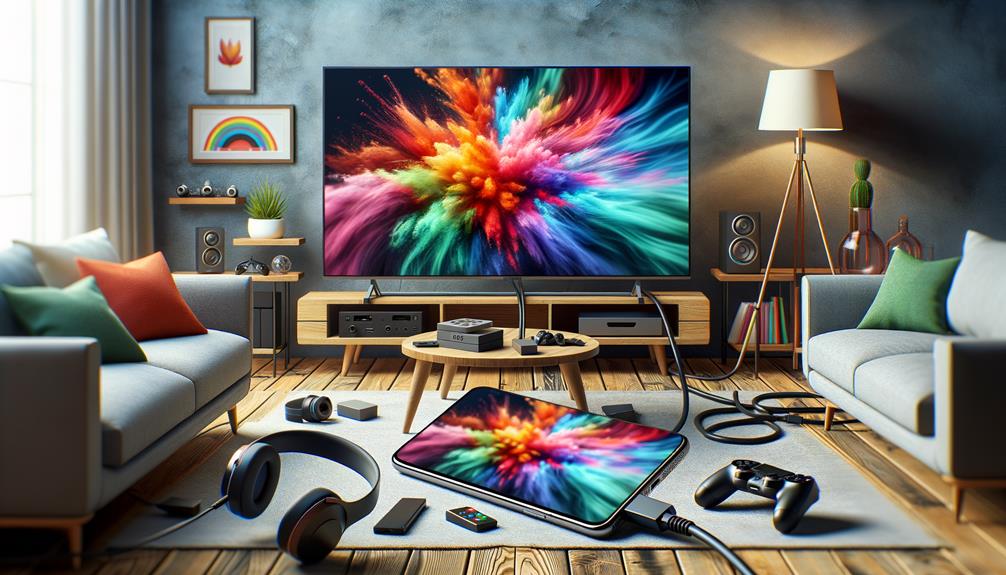
HDMI cables offer a reliable and direct method for mirroring your phone’s screen onto a TV, ensuring high-quality visuals and audio without the complexities of a wireless setup.
High-quality HDMI cables are essential as they support enhanced screen resolution, such as HD and 4K, making the mirrored display crisp and vibrant.
These cables also minimise lag, guaranteeing that the interaction between the phone and TV is seamless, which is particularly important for streaming video content or gaming.
| Feature | Benefit |
|---|---|
| Cable Quality | Ensures durability and fidelity |
| Compatibility | Adapters for various phones |
| Screen Resolution | Supports HD/4K for clear visuals |
Using HDMI for screen mirroring combines simplicity with performance, addressing both compatibility and lag concerns effectively.
Troubleshooting Common Issues
When encountering screen mirroring issues, it is important to first check for compatibility between your phone and TV model.
Troubleshooting techniques often begin with verifying device compatibility and ensuring that both devices are updated with the latest firmware to enhance connectivity.
Network connectivity is another significant factor; improve your connection by positioning devices closer to the Wi-Fi router or employing a Wi-Fi extender.
Additionally, app permissions can restrict mirroring functionality. It is essential to review and adjust the permissions and settings on both devices to enable screen sharing.
Methodically addressing these factors can resolve most problems related to screen mirroring, ensuring a seamless connection between your phone and TV.
Optimising Mirroring Performance
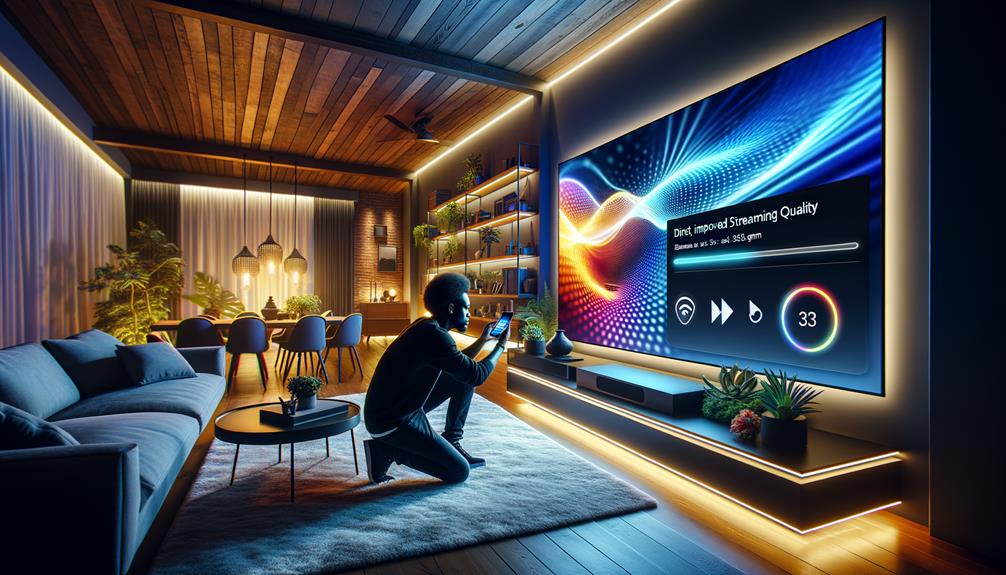
To maximise mirroring performance, make sure that both your phone and TV are connected to the same Wi-Fi network.
This guarantees the best Wi-Fi signal strength and enhances compatibility between devices.
Regularly check for software updates for both your phone and TV, as these can improve not only compatibility but also screen resolution and audio quality.
Additionally, minimise interference from other wireless devices to maintain a strong connection.
Place your phone within a clear line of sight to the TV, avoiding obstructions that could degrade signal strength.
Frequently Asked Questions
How Can I Mirror My Phone to My TV Without an App?
To display your phone’s screen on your television without using an app, consider cable connections like HDMI or explore wireless alternatives such as Miracast or Chromecast, if your devices support these technologies.
Can I Mirror My iPhone to My TV?
Yes, by utilising AirPlay functionality, you can project your iPhone’s display onto your TV. Confirm compatibility with AirPlay or connect via compatible wireless adapters to facilitate content streaming seamlessly to your television.
How Do I Connect My Mobile to My TV?
To connect your mobile to your TV, utilise cable connections like HDMI or opt for wireless solutions through streaming devices such as Chromecast or Apple TV, ensuring compatibility and the same network connection.
How Do I Mirror My Samsung Phone to TV?
To make use of the Smart View feature, make sure your Samsung TV and phone are connected to the same Wi-Fi. Optionally, a wireless dongle can enhance connectivity for devices not supporting direct Wi-Fi mirroring.
Conclusion
To sum up, screen mirroring offers a versatile means of content sharing, enhancing both entertainment and professional presentations.
The variety of technologies—native options, third-party applications, and dedicated hardware like Chromecast, Roku, and Amazon Fire TV—ensures compatibility across a wide spectrum of devices.
However, users must consider both hardware capabilities and network conditions to optimise performance.
Addressing common issues systematically can further enhance the mirroring experience, ensuring seamless integration of mobile devices with larger displays.
